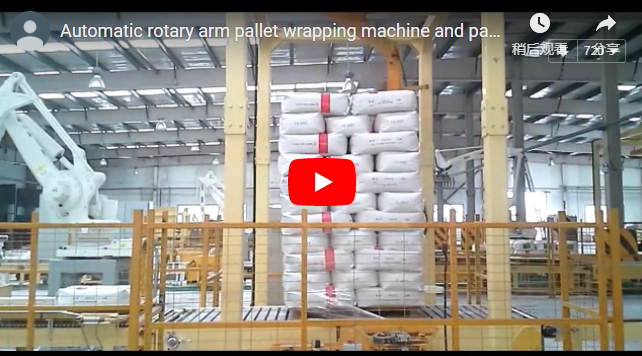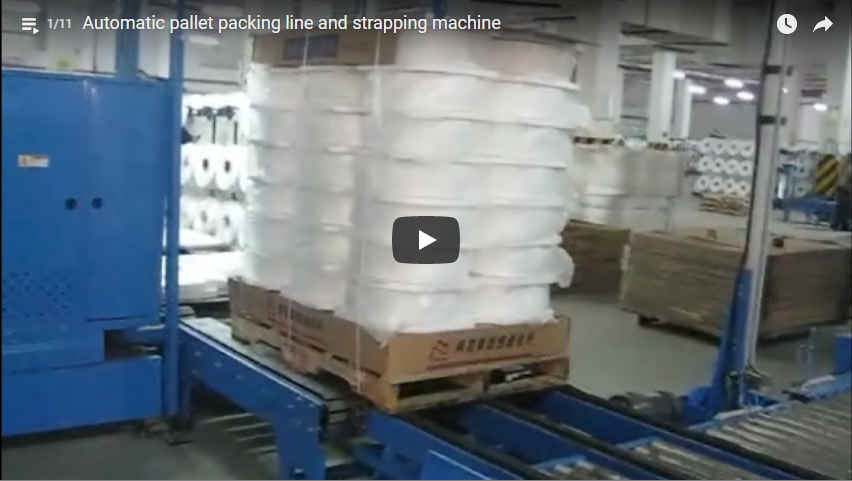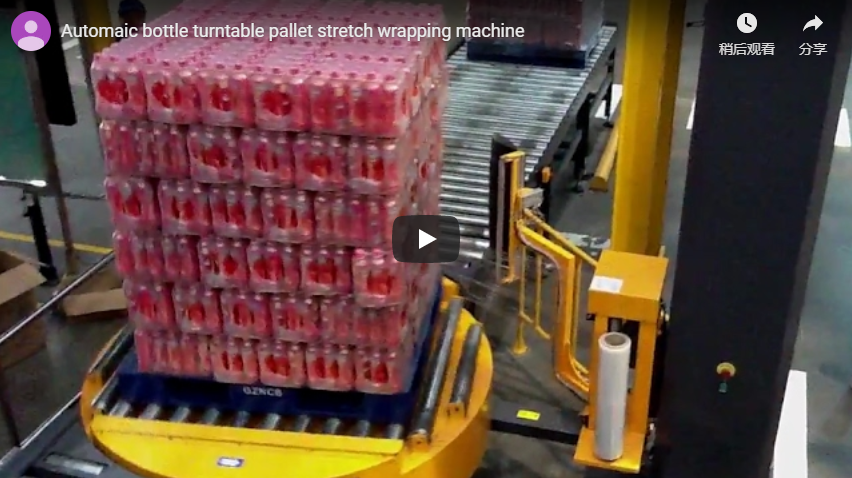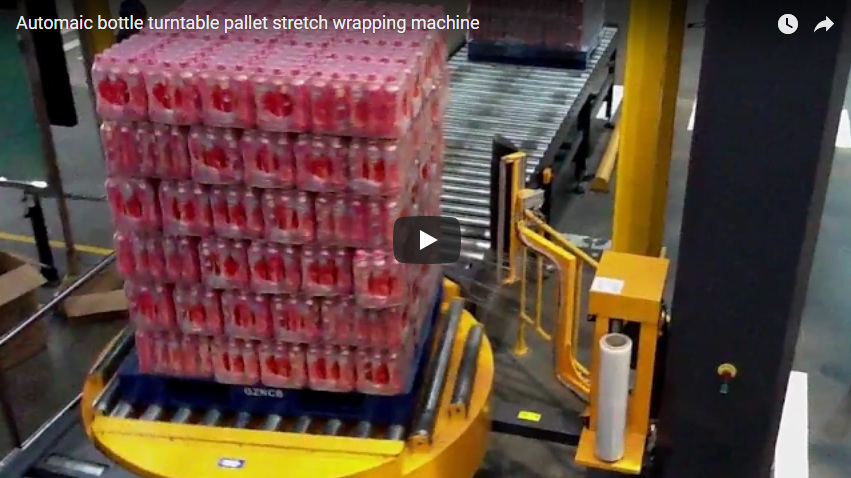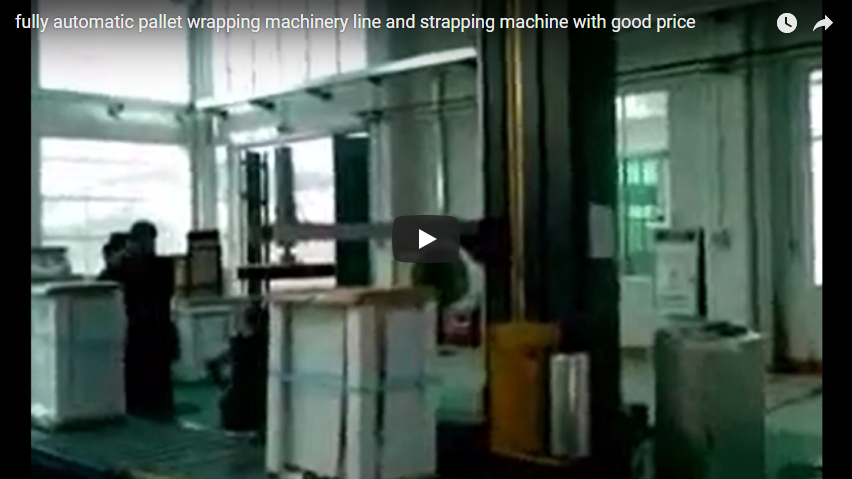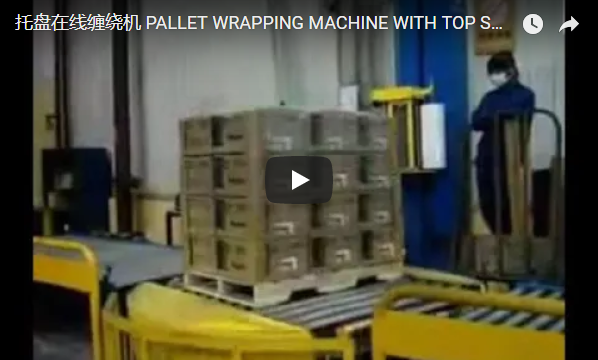Mobile Automation: A Deep Dive into Robot Pallet Wrapper Technology
In modern logistics and manufacturing, efficient and secure pallet wrapping is non-negotiable. While traditional turntable and rotary arm wrappers have their place, the demand for flexibility and automation in varied environments has spurred the rise of the robot pallet wrapper. This autonomous mobile stretch wrapping solution offers unique advantages for operations that require wrapping capabilities in multiple locations or handle oversized, unstable, or heavy loads unsuitable for conventional machines.
1. Understanding the Robot Pallet Wrapper: Core Concepts
A robot pallet wrapper, also known as a mobile pallet wrapper or self-propelled stretch wrapper, is an automated machine designed to navigate around a stationary pallet, applying stretch film securely. Unlike fixed systems that require pallets to be brought to the machine, the robot travels to the pallet. This fundamental difference unlocks significant operational flexibility.
Its core function is to unitize pallet loads using stretch film, providing stability, protection from dust and moisture, and tamper evidence. The machine operates autonomously after initial setup, following a pre-programmed path around the load.
2. Design and Structure: Engineering for Flexibility
The design of a robot pallet wrapper prioritizes mobility, autonomy, and consistent wrap quality. Key structural elements include:
- Mobile Chassis: A robust base, typically equipped with durable wheels (often non-marking polyurethane) and driven by electric motors, allows the robot to move freely across flat warehouse or production floors.
- Steering Mechanism: Advanced steering systems enable precise navigation around the pallet, often utilizing a steering handle for manual positioning and an automated guidance system during the wrap cycle.
- Vertical Mast: Houses the film carriage and guides its vertical movement to ensure film application across the entire height of the pallet load.
- Film Carriage Unit: This critical assembly holds the stretch film roll and incorporates the pre-stretch mechanism.
- Guidance System: Typically employs a tracing wheel or sensor arm that physically contacts or senses the pallet edge, maintaining a consistent distance during the wrapping process.
- Control Panel (HMI): A Human-Machine Interface allows operators to set parameters like wrap counts (top/bottom), film tension, overlap percentage, travel speed, and vertical carriage speed. Modern HMIs are often touchscreen-based and intuitive.
- Power System: Relies on rechargeable deep-cycle batteries (AGM or Lithium-ion) to provide power for several hours of operation or a specific number of wrap cycles per charge. An onboard or separate battery charger is included.
3. Key Components and Their Functionality
- Mast Assembly: Provides the vertical structure and travel path for the film carriage. Its height determines the maximum wrapping height capability.
- Powered Pre-Stretch Carriage: This is arguably the most critical component for film efficiency. It uses rollers rotating at different speeds to stretch the film before it's applied to the load. Common ratios range from 150% to over 300%, meaning one meter of film can be stretched to 2.5 to 4 meters, significantly reducing film consumption and improving load containment force.
- Tracing/Guidance Wheel: A freely rotating wheel mounted on an articulated arm follows the pallet contour, ensuring the robot maintains the correct wrapping distance even with irregular shapes. Some models may use optical or laser sensors.
- Safety Systems: Essential for mobile equipment. These include:
- Emergency stop buttons.
- Safety bumpers on the chassis that stop the robot upon contact with an obstacle.
- Warning lights and audible alarms during operation.
- Optional laser scanners for enhanced obstacle detection.
- Film Cutting and Clamping System: Automates the end of the cycle by cutting the film tail and often clamping it to secure the wrap.
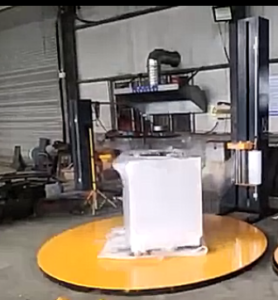
4. Technical Specifications: A Comparative Look
When evaluating robot pallet wrappers, several key technical specifications are crucial:
- Maximum Pallet Height: Typically ranges from 2000 mm (78") to 3000 mm (118") or more, depending on the mast height.
- Maximum Pallet Dimensions (L x W): Theoretically unlimited, as the robot moves around the pallet, but practical limitations exist based on available floor space. Minimum pallet size is often specified (e.g., 600mm x 600mm).
- Wrapping Speed: Often measured in rotational speed (RPM) or pallets per hour/charge. Can range from 30-80 meters per minute travel speed, wrapping 15-30 standard pallets per hour.
- Film Pre-Stretch Ratio: Variable, commonly up to 250% or 300%. Higher ratios mean greater film efficiency.
- Battery Life / Cycles per Charge: Varies widely based on battery capacity and usage. Typically 150-300 pallets per charge. Charge times are usually 6-8 hours.
- Machine Dimensions & Weight: Important for manoeuvrability and floor load capacity. Weights can range from 300 kg to 500 kg.
- Minimum Working Area: Requires a clear radius around the pallet, typically 1100mm - 1300mm (43" - 51").
- Film Roll Specifications: Accepts standard machine film rolls (e.g., 500mm width, 76mm core).
Example Parameter Comparison (Typical Ranges):
| Specification | Typical Range | Importance |
|---|---|---|
| Max Wrap Height | 2.0m - 3.0m+ | Must accommodate tallest loads |
| Pre-Stretch Ratio (%) | 150% - 300%+ | Higher = Better film economy & load holding |
| Pallets per Charge | 150 - 300+ | Determines operational uptime between charges |
| Min. Working Clearance | 1.1m - 1.3m | Dictates required free space around pallet |
| Travel Speed (m/min) | 30 - 80 m/min | Impacts overall cycle time |
| Film Type Compatibility | Standard Machine Film | Ensures availability of consumables |
5. How it Works: The Wrapping Process Step-by-Step
- Positioning: The operator manually steers the robot to the starting corner of the pallet using the steering handle.
- Film Attachment: The operator pulls the film from the carriage and tucks it into the pallet base or uses an automatic gripping system if equipped.
- Parameter Selection: The operator selects the desired wrap program/parameters on the HMI (e.g., number of bottom wraps, top wraps, film tension, overlap).
- Initiation: The operator starts the automatic cycle.
- Wrapping Cycle:
- The robot autonomously navigates around the pallet, guided by the tracing wheel/sensor.
- The film carriage dispenses stretch film under controlled tension and pre-stretch.
- The carriage moves vertically up the mast according to the programmed overlap.
- Once the top is reached, it applies the set number of top wraps.
- The carriage descends, applying film until the set number of bottom wraps is completed.
- Film Cut and Seal: At the cycle's end, the machine automatically cuts the film. Some models may include a heat sealing or wipe-down mechanism.
- Return: The robot stops, ready to be moved to the next pallet.
6. Operational Advantages: Beyond Basic Wrapping
The benefits extend beyond simple automation:
- Unmatched Flexibility: Wrap loads anywhere on the facility floor. Ideal for oversized, very heavy, or unstable loads that are difficult or impossible to move onto a turntable/rotary arm machine. Eliminates double handling.
- Space Saving: No dedicated floor space required for the machine itself when not in use; it can be stored elsewhere.
- Improved Efficiency: While potentially slower per-pallet than high-speed fixed systems, it eliminates pallet transport time to/from the wrapper, potentially increasing overall throughput in certain logistics flows. Reduces manual labour requirements.
- Consistent Wrap Quality: Automated control ensures consistent film application, tension, and overlap, leading to better load containment and reduced product damage during transit compared to manual wrapping.
- Material Savings: Powered pre-stretch systems can reduce film consumption by 50-75% compared to manual wrapping or machines without pre-stretch, offering significant cost savings and environmental benefits.
- Enhanced Safety: Reduces manual handling associated with hand wrapping, minimizing risks of back injuries and repetitive strain. Integrated safety features protect personnel in the vicinity.
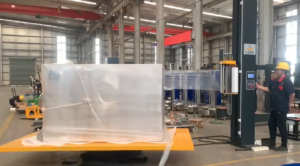
7. User Experience and Integration Insights
From a user perspective, modern robot wrappers are designed for ease of use. Intuitive HMIs allow quick parameter adjustments and program storage. Battery management is crucial; establishing a routine charging schedule is key to maximizing uptime. Maintenance typically involves battery care, wheel inspection, sensor cleaning, and periodic checks of the film carriage mechanism.
While primarily standalone units, some advanced models offer potential for integration with Warehouse Management Systems (WMS) or fleet management software for tracking usage and performance, though this is less common than with fixed automated systems. Their primary value lies in their flexibility and ease of deployment without major infrastructure changes.
Common Applications:
- Large distribution centers with varied wrapping locations.
- Manufacturing facilities with oversized products (e.g., furniture, machinery).
- Operations handling fragile or unstable loads.
- Businesses needing a scalable wrapping solution without fixed installation.
8. Choosing the Right Robot Pallet Wrapper: Key Considerations
Selecting the appropriate model involves evaluating:
- Load Characteristics: Dimensions (LWH), weight, stability, shape complexity.
- Throughput Needs: How many pallets per hour/shift need wrapping?
- Operating Environment: Available floor space, floor condition (smooth, flat required), temperature.
- Budget: Initial purchase price plus ongoing costs (film, maintenance, power).
- Features Needed: Level of automation (auto film cut/clamp), pre-stretch requirements, specific safety features.
- Vendor Support: Availability of training, service, and spare parts.
9. Manufacturer Spotlight: Fhope Packaging Solutions
Several manufacturers specialize in robotic wrapping technology. Fhope, for instance, is noted as a provider offering robot pallet wrappers positioned as affordable and efficient solutions. They emphasize ease of use and the capability to customize machines to specific customer requirements, aligning with the need for tailored solutions in diverse industrial applications. When exploring options, considering manufacturers like Fhope that focus on adaptability and efficiency can be beneficial.
Conclusion
The robot pallet wrapper represents a significant advancement in stretch wrapping technology, offering unparalleled flexibility and automation for diverse applications. By bringing the wrapping process directly to the load, it overcomes the limitations of fixed systems, particularly for large, heavy, or awkwardly shaped pallets. With advanced features like powered pre-stretch and sophisticated safety systems, these mobile robots enhance efficiency, reduce material costs, improve load security, and contribute to a safer working environment. As logistics and manufacturing continue to evolve, the adaptability of robot pallet wrappers positions them as a valuable asset for optimizing end-of-line packaging operations.
For further information on stretch wrapping solutions, consider exploring resources from industry leaders and packaging associations.
Explore more stretch wrapping options here: Stretch Wrapping Machines from Fhopepack

